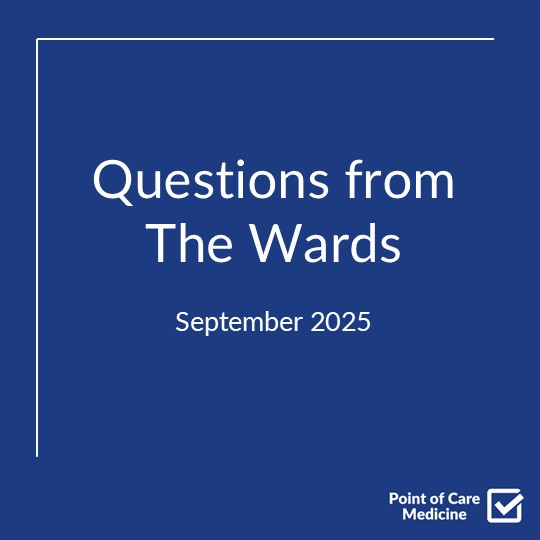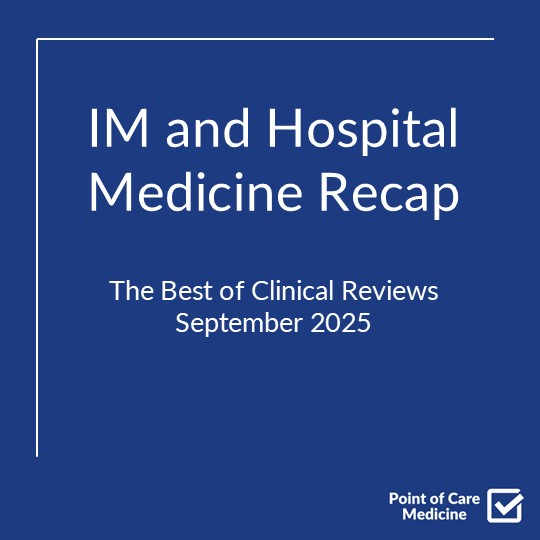Summary
- Pulmonary embolism ranks as the third leading cause of cardiovascular death in the United States, with acute mortality rates ranging from 3.7% to 20.6% in hospitalized patients without and with hemodynamic instability, respectively.
- The combination of low/moderate clinical probability and negative D-dimer testing effectively rules out pulmonary embolism without need for further imaging.
- Major risk factors significantly increase PE probability with quantifiable odds ratios: recent surgery (OR 21), trauma (OR 13), and hospitalization/immobility (OR 8).
- Age and EKG findings contribute independently to PE risk assessment, with specific findings altering probability.
- Chest radiograph findings in PE are typically nonspecific but help exclude alternative diagnoses.
- Right ventricular (RV) failure from PE-induced afterload is the primary cause of death, making RV function assessment critical for risk stratification.
- PE risk stratification follows a three-tier system: high, intermediate, and low risk, based on hemodynamic stability, RV function, and cardiac biomarkers.
- Systemic thrombolysis carries a significant bleeding risk with an NNH of 18 for major bleeding and should be reserved for specific high-risk scenarios.
- Direct oral anticoagulants (DOACs) have demonstrated noninferiority to vitamin K antagonists while carrying a lower bleeding risk.
- Catheter-directed thrombolysis (CDL) has emerged as a promising alternative to systemic thrombolytics with a more favorable safety profile.
- Mechanical ventilation in PE patients requires careful consideration due to potential hemodynamic compromise.
- Catastrophic PE represents a subset of high-risk PE requiring immediate intervention and possible mechanical circulatory support.
- Inferior vena cava (IVC) filters should be considered in patients with contraindications to anticoagulation.
- Low-risk PE patients (approximately 60% of cases) may be candidates for outpatient management.
Audio
Video
Introduction
Pulmonary embolism (PE) is a significant cause of cardiovascular mortality, presenting a unique challenge for hospitalists. Effective PE management relies on rapid risk stratification, judicious use of diagnostic testing, and appropriate treatment selection. This guide provides hospitalists with key insights into the management of pulmonary embolism, from initial diagnosis to treatment selection and disposition. Early diagnosis and treatment are crucial to improving outcomes, and a systematic approach can help navigate the complexities of PE care.
1) Pulmonary embolism ranks as the third leading cause of cardiovascular death in the United States, with acute mortality rates ranging from 3.7% to 20.6% in hospitalized patients without and with hemodynamic instability, respectively.
Pulmonary embolism is a critical concern for hospitalists, responsible for approximately 40,000 deaths annually in the US. Mortality risk is directly correlated with hemodynamic stability at presentation, highlighting the importance of initial assessment. An increase in PE diagnoses is observed due to heightened physician vigilance and the widespread use of CT imaging. Given the variable outcomes, early diagnosis and treatment initiation are crucial for improving patient outcomes. Risk stratification should be performed immediately upon diagnosis to guide management.
2) The combination of low/moderate clinical probability and negative D-dimer testing effectively rules out pulmonary embolism without need for further imaging.
This combination has a negative likelihood ratio of 0 with an upper 95% CI of 0.06, making it a powerful tool for excluding PE. The sensitivity of D-dimer assays varies: ELISA has a sensitivity of approximately 90%, while latex immunoassays offer a sensitivity of around 96%. It’s critical to understand that false-positive D-dimer results are common, which limits its utility as a standalone test. D-dimer testing should only be used after establishing pre-test probability, and clinical assessment must be completed before, not after, reviewing D-dimer results to ensure appropriate clinical judgment is maintained.
3) Major risk factors significantly increase PE probability with quantifiable odds ratios: recent surgery (OR 21), trauma (OR 13), and hospitalization/immobility (OR 8)
Several risk factors contribute significantly to the likelihood of developing PE. Active cancer with chemotherapy carries an odds ratio (OR) of 6.5, while active cancer without chemotherapy carries an OR of 4.1. Neurologic disease with leg paresis presents an OR of 3.0, similar to the use of oral contraceptives, which also has an OR of 3.0. Hormone replacement therapy is associated with an OR of 2.7. Understanding these risk factors allows for more accurate risk assessment.
4) Age and EKG findings contribute independently to PE risk assessment, with specific findings altering probability.
Age greater than 63 years independently increases PE risk. On an electrocardiogram (ECG), signs of acute right ventricular overload increase the probability of PE. The classic but nonspecific S1Q3T3 pattern and right bundle branch block may be present in some patients. T-wave inversion across precordial leads can also be observed. A normal ECG does not exclude PE, but it does impact probability assessment and should be considered within the broader clinical picture.
5) Chest radiograph findings in PE are typically nonspecific but help exclude alternative diagnoses.
While chest x-ray findings in PE are not specific, they can provide valuable information, especially to rule out alternative diagnoses. Common findings include an elevated hemidiaphragm and pleural effusion. Hampton's hump, a wedge-shaped peripheral opacity, is specific but uncommon. Westermark's sign, indicating regional oligemia, is highly specific when present. Platelike atelectasis may also be seen. A normal chest x-ray does not exclude PE, but it does contribute to the overall assessment of risk and diagnosis.
6) Right ventricular (RV) failure from PE-induced afterload is the primary cause of death, making RV function assessment critical for risk stratification.
Early indicators of deterioration include RV dilation and increased wall tension. The progression of RV dysfunction can lead to neurohormonal activation and RV ischemia, further complicating the clinical picture. The RV/LV ratio on CT or echocardiogram serves as a crucial marker for monitoring disease progression. Significant RV compromise is nearly universal in high-risk PE, making serial assessment of RV function vital in guiding treatment decisions.
7) PE risk stratification follows a three-tier system: high, intermediate, and low risk, based on hemodynamic stability, RV function, and cardiac biomarkers.
High-risk PE is characterized by sustained hypotension with systolic blood pressure (SBP) less than 90 mmHg or shock. Intermediate-risk requires either evidence of RV dysfunction or elevated cardiac biomarkers. Low-risk patients have both normal RV function and normal biomarkers. The Pulmonary Embolism Severity Index (PESI) score is also a useful tool for refining risk assessment. It is important to remember that a patient's risk category can change during hospitalization, necessitating ongoing risk assessment.
8) Systemic thrombolysis carries a significant bleeding risk with an NNH of 18 for major bleeding and should be reserved for specific high-risk scenarios.
The risk of intracranial hemorrhage is 4.6 times higher with systemic thrombolysis compared to anticoagulation alone. Bleeding risk is particularly elevated in patients over 65 years of age. Reduced-dose protocols have been explored as a method to potentially lower bleeding risk without compromising efficacy. Contraindications must be thoroughly assessed before thrombolysis administration and when available alternative interventions should always be considered.
9) Direct oral anticoagulants (DOACs) have demonstrated noninferiority to vitamin K antagonists while carrying a lower bleeding risk.
For most patients with PE, DOACs are now preferred over vitamin K antagonists. Initial parenteral anticoagulation with enoxaparin or fondaparinux is generally recommended. No bridging is needed when initiating DOACs. DOACs are favored for their ease of use compared to vitamin K antagonists, as regular monitoring of coagulation parameters is not required.
10) Catheter-directed thrombolysis (CDL) has emerged as a promising alternative to systemic thrombolytics with a more favorable safety profile.
CDL can be delivered directly into pulmonary arteries over a period of 12-24 hours. Studies have shown no intracranial hemorrhage and low rates of major bleeding with CDL. Both standard and ultrasound-assisted approaches have proven effective. CDL has been shown to improve RV function and reduce pulmonary artery pressures. It is best suited for intermediate to high-risk patients with contraindications to systemic thrombolysis.
11) Mechanical ventilation in PE patients requires careful consideration due to potential hemodynamic compromise.
Positive pressure ventilation can decrease RV preload and carries a significant risk of severe hypotension during induction. When intubation is necessary, VA-ECMO should be readily available to manage acute decompensation. Norepinephrine is the preferred vasopressor to support blood pressure in these patients. Oxygen therapy is recommended for saturations below 90%.
12) Catastrophic PE represents a subset of high-risk PE requiring immediate intervention and possible mechanical circulatory support.
This severe presentation of PE is characterized by the need for high-dose vasopressors or rapid escalation in support. VA-ECMO may be necessary for stabilization and urgent revascularization is often required. Mortality rates in catastrophic PE can reach as high as 65%. A multidisciplinary team approach is vital for managing these critical patients.
13) Inferior vena cava (IVC) filters should be considered in patients with contraindications to anticoagulation.
IVC filters are associated with a 50% reduction in PE incidence, but a 19% risk of venous wall penetration exists with their use. Removal is recommended within 25-54 days of placement. IVC filters are not routinely indicated in patients who can receive anticoagulation. Regular follow-up is required to ensure timely removal and mitigate complications.
14) Low-risk PE patients (approximately 60% of cases) may be candidates for outpatient management.
Patients with a PESI score <3 are good candidates for outpatient management. Oral anticoagulation should be started promptly in these cases. Regular follow-up appointments should be arranged to ensure treatment effectiveness. It's also critical to provide comprehensive patient education about warning signs. Advanced therapies are typically not needed in this group.








.png)
